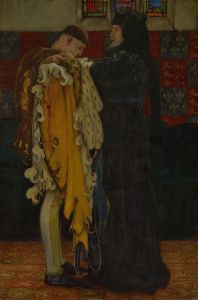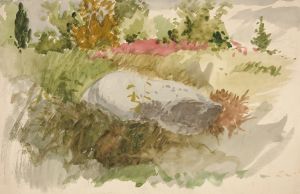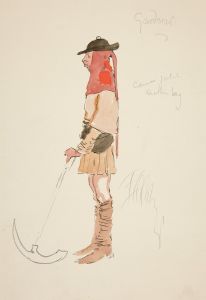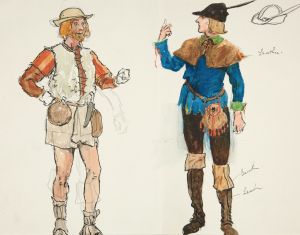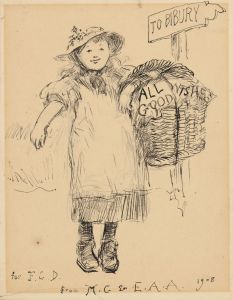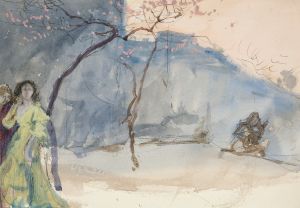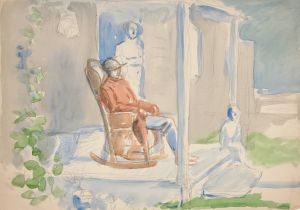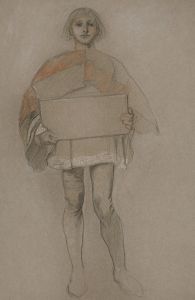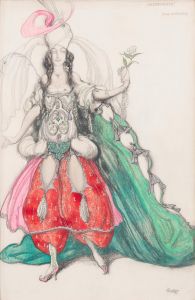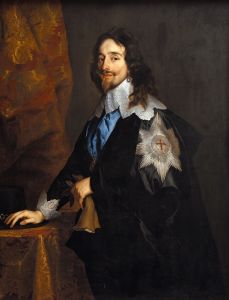
Dancers, costume sketch for Henry Irving’s Planned Production of King Richard II
A hand-painted replica of Edwin Austin Abbey’s masterpiece Dancers, costume sketch for Henry Irving’s Planned Production of King Richard II, meticulously crafted by professional artists to capture the true essence of the original. Each piece is created with museum-quality canvas and rare mineral pigments, carefully painted by experienced artists with delicate brushstrokes and rich, layered colors to perfectly recreate the texture of the original artwork. Unlike machine-printed reproductions, this hand-painted version brings the painting to life, infused with the artist’s emotions and skill in every stroke. Whether for personal collection or home decoration, it instantly elevates the artistic atmosphere of any space.
"Dancers, costume sketch for Henry Irving’s Planned Production of King Richard II" is a work by the American artist Edwin Austin Abbey. Abbey, born in 1852, was a prominent illustrator and painter known for his depictions of Shakespearean subjects and historical themes. His work often reflected a deep engagement with literature and drama, which is evident in this particular sketch.
The sketch was created as part of a series of costume designs for a planned production of William Shakespeare's play "King Richard II" by the renowned British actor-manager Henry Irving. Irving was a significant figure in the Victorian theater, known for his innovative productions and for being the first actor to be knighted. His plans to stage "King Richard II" were part of his broader ambition to bring Shakespeare's works to life with a high degree of historical accuracy and dramatic flair.
Abbey's involvement in the project highlights his reputation as an artist capable of capturing the essence of Shakespearean drama. His sketches were intended to provide a visual representation of the characters, helping to inform the costume design for the production. The sketch of the dancers would have been part of the larger effort to create an immersive and authentic theatrical experience, aligning with Irving's vision.
The artwork itself is a testament to Abbey's skill in rendering detailed and expressive figures. His attention to the nuances of costume design reflects a careful study of historical garments, which was a hallmark of his work. Abbey's ability to convey movement and emotion through his sketches contributed to the overall aesthetic of the planned production, even though it ultimately never came to fruition.
Abbey's collaboration with Irving is a notable example of the intersection between visual art and theater during the late 19th century. It underscores the importance of costume design in theatrical productions and the role of artists in shaping the visual narrative of a play. Although the production of "King Richard II" by Irving did not materialize, Abbey's sketches remain a valuable part of his artistic legacy, offering insight into the creative processes behind theatrical staging during this period.
The sketches, including "Dancers," are part of Abbey's broader body of work that continues to be studied for its artistic and historical significance. They provide a glimpse into the collaborative efforts between artists and theater practitioners in the Victorian era, highlighting the meticulous planning and artistic vision that went into staging Shakespeare's plays. Abbey's contributions to this field are celebrated for their detail, historical accuracy, and the ability to bring literary characters to life through visual art.





